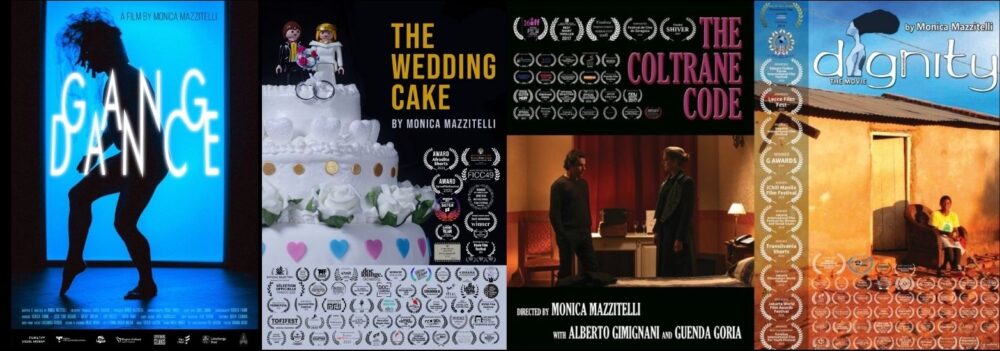 Sometimes a country feeds on a reverse provincialism, taking for granted and thus nullifying the talents it possesses, that others experience and enjoy at full. Kekko Fornarelli belongs to those who are struggling to be recognized in Italy but on the contrary are loved abroad, where they make international tours. Hopefully this will not be the case for too much longer.
Sometimes a country feeds on a reverse provincialism, taking for granted and thus nullifying the talents it possesses, that others experience and enjoy at full. Kekko Fornarelli belongs to those who are struggling to be recognized in Italy but on the contrary are loved abroad, where they make international tours. Hopefully this will not be the case for too much longer.
In his latest work, Outrush, Fornarelli expresses much more than a talent for piano playing: the composition is very powerful, new, innovative, free. Each piece a narrative that contains dozens of ideas, a succulent abundance that comes with each new listening without decreasing the smoothness of this album, that captivates you from the very start.
In the best new jazz Svenssonian path, Fornarelli with his fellow accomplished musicians (Giorgio Vendola on double bass and Dario Congedo on drums) creates a unique, innovative, happy world. Seven instrumental tracks and a sung one, so movingly interpreted by guest singer Roberto Cherillo, with whom Kekko has toured half the world.
The Big Bang Theory is a terrific start and quite significant for this album: there are dozens of ideas, overlapping thoughts, streets into which get lost, as if the big bang -after creating the Fornarelli universe at its first happy outburst, would also show its wonderfully hectic but also superslow evolvement. And you have the funny feeling that sometimes the instruments must chase the music, like a flooded river, without holds. And such is the strength of this piece that the visceral roaring crescendo of the finale, with its double bass pushing on the belly, that you have to listen to the piece once more, to look again at the newborn world, its wild, magmatic beauty.
Drawing Motion is immediately characterized by a minimal attack, the double bass played with a bow giving a classic feeling on a carpet of brushes. The space is intimate and refined, as always full of changes up to the point where the gaze is no longer self-contemplating but it enlarges to what is moving around, as if called to proceed further. Afterwards the space gets small again, delicate and contemplative, with the bow tying together the restrained, fragmented sounds of piano and drums once more. New sounds, that paint jazz innovating it.
Continuous change of tone, rhythm, a decidedly more rock base with only the piano playing with the notes in a trendy jazzy way -and lots of electronics- for What Kept You So Late, one of the tracks that reminds me more closely the Jakob Karlzon Trio.
Like a Driftwood is a more classical piece, closer to the previous album, and its greater simplicity will probably offer room for improvisation when played live.
Reasons will be a favorite to anyone who is especially sensitive for double bass playing, played again with the bow in some parts; divinely. The dialogue between piano and bass is murmured and sad, like words after the fight, at the end of anger, after the outburst -the words spoken to try and make sense of misunderstandings- and the track ends in placid melancholy.
Weeping Souls has a fantastic play piano with the right hand acting almost as a counterpoint to the left, magnificently doubling the instrument. Fornarelli plays with his piano like few do, as if it weighed nothing, and even if you listen to this track -perhaps the album’s most Svenssonian- a number of times you will continue to find new shades, meanings, landings, and flights. Congedo expresses one of his very best moments with a beautiful punctuation on the finale, where his playing explodes to eventually fade on the cymbals, onto which the piano climbs powerful and funereal, almost Wagnerian.
Don’t Hide is a little gem. A piece that should be listened to by jazz singers as it embodies -for me- the perfect measure between an instrumental track and song. The magnificent voice of Roberto Cherillo melts like watercolors under Kekko Fornarelli’s rain of keys, like hot and resilient bronze. He fills every tonal space using his voice like a supple contralto string that is pulled by a significant and moving piano, supported and contained with rhythmic elegance.
The title track Outrush ends the album with its firm and vibrant juggling: constellations of ideas, change of pace, direction, tone and mood alternating with a constant tension and almost fierce rhythm, rich bass sounds beyond the strings, with lavish and rich drums. The piano sounds almost Beethovenian, so solemn the left hand. It’s a pity this track is so short.
Kekko, congratulations! A powerful album, full of ideas and innovation. Is each track a story on its own, or are they chapters of a novel you wanted to narrate?
Both. I've always loved to write my own music approaching it as a soundtrack, trying to tell something through the notes, a story. After a long period of reflection on my life and my music (which at the time I had stopped enjoying), I decided a few years ago that I wanted to be wholly myself, playing the music that I felt inside, abandoning all forms jazz clichés. I wanted to tell about me and build a sincere dialogue with the listener. So with "Room of Mirrors" (the title is not random) I started to write songs that speak of moments of my life, emotions or feelings, personal reflections, or simple encounters, and then tried to re-create these life snapshots through the notes. Consequently, even though each track is composed individually (I like to allow myself enough interval to let Time and Events flow, my muses), the various tracks become chapters of a novel: my life.
Tell us about your relationship with "Nordic” jazz, both for the past and for the future.
Thank you for your question, and if you allow me, I would like to take this opportunity to clarify this issue. Many jazz journalists often associate me to Svensson in a completely wrong sense, though partially true. I've never been a big eater of other people's music, for the simple fact that I like to compose my own; however, it is true that I drew some important inspiration from northern Europe. My first guiding light was Nils Petter Molvær’s Khmer, that I listened to thru a friend in 2001; she was a colleague when I worked for a furniture shop for a living. Nils Petter remains, to this day, one of the few musicians who I dream of having as guest musician with his ethereal blowing… marvelous! Later, in 2003, a friend who at the time ran a record store insisted that I listened to e.s.t.’s Strange Place for Snow, and he was right. Later on I also bought Viaticum. Two extraordinary albums, no doubt about it.
These examples of northern European jazz paved my way to decide describing what Puglia, my homeland, and northern Europe have in common, thru music, though they may appear opposite at first sight. It is a sense of desolation that cannot be explained in words, you can only try if you’re born and grown there. It was therefore natural for me to continue on a path that with time, album after album, is taking me closer and closer to a "parallel" sound to that of Northern jazz: it is a matter of sound approach, a very different thing than writing. In the natural course of events, today I’m starting to get opportunities to interact with the northern European circuit: festivals, to begin with, and now new collaborations with musicians. From next February a new quartet will start, comprising Mats Eilertsen and Robert Mehmet Ikiz, in addition to a great friend (Italian) Walter Beltrami. Concerning this, I must mention the key and original role played by my dear Turkish friend Fatih Erkan that being a great expert in nu jazz and Nordic jazz, has liaised us.
“Outrush”, Abeat, 2014
- The Big Bang Theory
- Drawing Motion
- Weeping Souls
- Reasons
- What Kept You So Late
- Like A Driftwood
- Don't Hide
